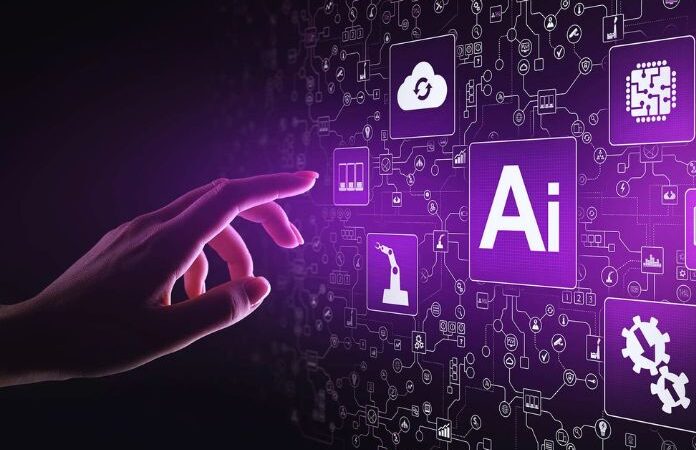Field Service Management 4.0: Increase Service Quality In 4 Steps

Field Service Management 4.0 : Digital change enables B2B companies to transform their business models. Above all, the service is strengthened by innovative software and digital solutions. Because it has a significant impact on the customer experience. Interim Manager Peter Kuhle explains what role service technicians play and what steps are necessary to achieve Field Service Management 4.0.
The fields of activity in the technical field service (Field Service) are diverse: Service technicians advise customers on technological devices and systems, install them according to specific specifications and safety guidelines, maintain them regularly, repair them if necessary – and upgrade them with innovations or updates. The field service contributes significantly to customer satisfaction and is a critical interface between the provider and the customer company.
Digital change enables the B2B service to work even more efficiently and effectively, optimize processes and increase the customer experience. Integrated field service software and innovative digital service solutions make it possible. However, the service quality stands and falls with the orientation of the service. A structured service department, a professionalized technical field service, and digital service solutions are critical.
Table of Contents
The Strategic Goal: Higher Customer Satisfaction
The customer experience (CX) not only plays a decisive role in sales but is also essential for service. In the Zendesk CX Trends 2022 survey, 76 percent said they switched providers after a poor service experience. So a strategic goal must be to deliver quality service that meets ever-increasing customer expectations—while balancing costs and increasing profitability. This will only succeed if the following four steps are taken:
- Tools and processes are interconnected.
- A high level of communication between service and sales takes place.
- Proactive rather than reactive service approaches are chosen.
- Employees are trained in remote services and augmented reality (AR).
1. Connect Tools And Processes
Employees in technical field service often work with several digital tools, e.g., B. a planning system, a time recording system, a communication platform, and a routing app. These tools usually come from different providers and are rarely integrated into one platform. This creates a fragmented ecosystem of individual devices, leading to inefficient workflows and employee frustration. There are several sources of information that can only be called up individually. That’s why companies should connect the tools for the technical field service with each other and network them with the CRM.
2. More Communication Between Service And Sales
A service report belongs in the CRM because what happens in the technical field service is also essential for sales. However, efficient collaboration is only possible if all participants are networked via their devices, data, locations, goals, and interactions and can support each other. Because: The greater the communication deficits, the higher the additional effort for follow-up work or repeat visits – and the more negative the customer satisfaction and brand perception. That is why all the tools and information should be centralized on one platform. This is the only way to create a networked workflow – and the technical field service can call up its full performance potential.
3. Proactive Approaches Through Forward-Looking Service
We live in a networked, digitized world where almost all areas’ interactions occur in real time. This impacts customer requirements: the classic service approach is no longer sufficient in which the service department reacts to customer problems. Today, problems often have to be solved or known before they arise. That is why digital and proactive solutions such as condition monitoring or predictive maintenance should not be missing in any service portfolio:
- Condition Monitoring describes the real-time visualization and monitoring of states or events of machines, devices, and systems. Sensors measure temperature, pressure, vibrations, or noise. If one of the measured states changes, the detector sounds an alarm so that a service technician can check the state or rectify it.
- Predictive maintenance means anticipatory maintenance and goes one step further. A machine can use status, runtime, and historical maintenance data to predict when it is about to fail – and when maintenance is required. This saves operators high costs for downtime.
These proactive service offerings enable the service department to anticipate customer needs, personalize customer interactions, and reduce maintenance downtime. This improves CX and increases operational efficiency.
4. Train Service Technicians In Remote Services And AR
The quality of the service stands and falls with the employees. Tools only come second because a new device can be as good as it is. The tool is of little use if the employees are not trained in it and do not know the processes. That is why employee training is another critical step in optimizing service performance. This includes familiarizing the service technicians with augmented reality. They can give instructions remotely or perform more efficient maintenance, repairs, or on-site inspections.
Through remote services, the technical field service can reach responsible customers on the shop floor (e.g., machine operators). The latter wears data glasses with a camera that projects the live image onto the technician’s screen in the service center. He then gives instructions so the customer can service the machine himself on site.
If the technician is on-site, he can scan the machine using a tablet or smart glasses. Components and parts not visible to him are displayed on the screen. He can call up circuit diagrams, operating and video instructions, or spare part numbers and material descriptions that he needs for his work.
Conclusion: Seize Opportunities!
Service will play an increasingly important role in the future. Digital technology enables innovative services as digital business models. The four steps mentioned here are the homework providers need to do if they want to transform into digital service providers and increase their service quality. For this, upper management must be willing and able to change – and implement things. Then the run times for customers improve, the CX increases, and the positive brand perception gains momentum.






